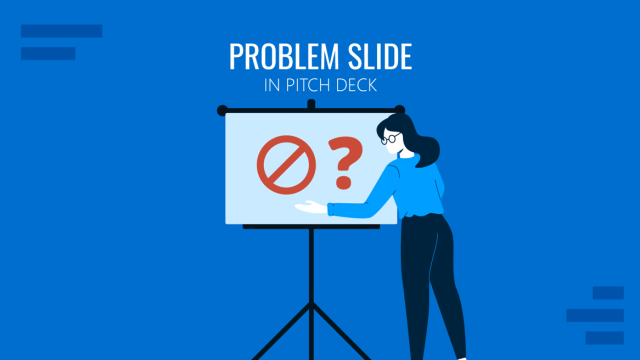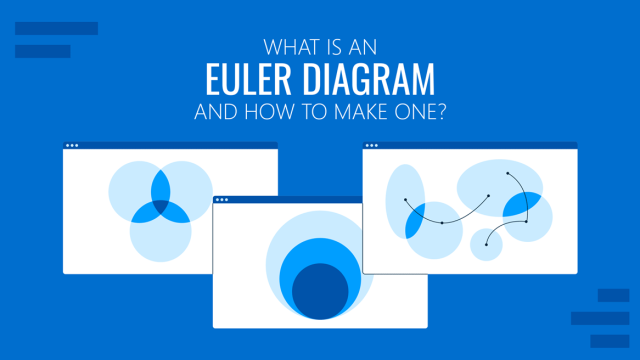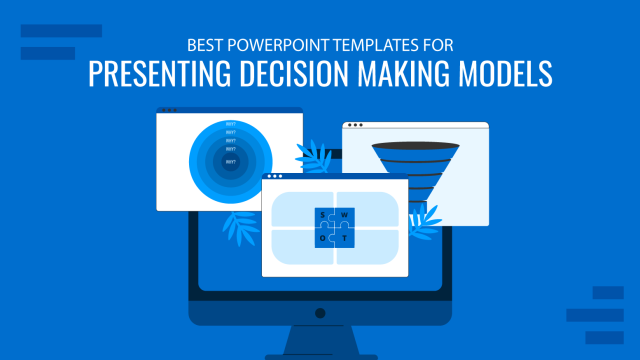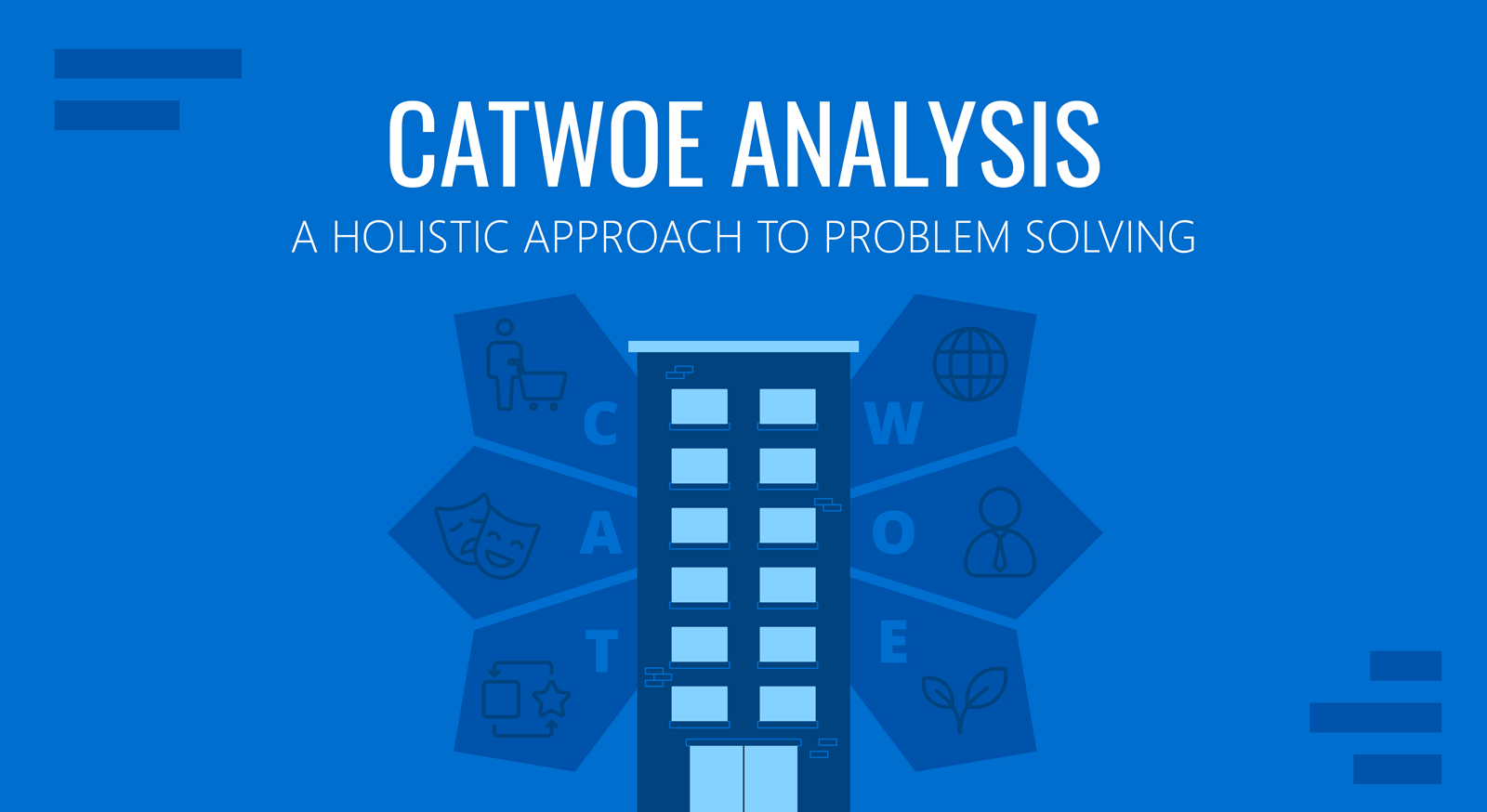
Every business owner has experienced the frustration of trying to address a problem. The existence of discrepancies in viewpoints may make decision-making challenging. Problem-solving is an everyday practice for those doing any business. When you can solve the problem, it generally brings about the best results, the adversary will swiftly overtake you if you overlook or neglect those problems.
Soft Systems Methodology (SSM) claims to address such problems by creating root definitions or methodological approaches for each problem. The root definition gives a defined name to the methodologies, indicating who executes what action and for what reason. Each stakeholder develops a root definition based on their approach. He then communicates his insights among the various stakeholder groups. This approach can be identified through CATWOE Analysis. It helps how you cope with important challenges that may arise in your business.
Now, let’s discuss what CATWOE Analysis is and how it can be used as a powerful problem-solving tool practically.
What is CATWOE Analysis?
David Smyth invented the CATWOE method in 1975. He defined six problem-solving elements, which he integrated into the acronym CATWOE. In the words of Peter Checkland, CATWOE is an essential checklist that can be used to encourage problem-solving thinking.
The CATWOE Analysis is a robust problem-solving method that analyzes the larger view of the business to help professionals make decisions and define strategies. CATWOE is the acronym for Clients, Actors, World view, Owners, and Environment.
The CATWOE analysis is a great way to comprehend the different viewpoints that each stakeholder has together within the company. Following are elaborated features of the CATWOE analysis method, and the components below are used to think about a problem and the solution:
- Customers – Who benefits from the business?
- Actors – Who are the players in the process?
- Transformation Process – What is the transformation at the core of the system?
- World View – What is the big picture of the business, and what are its impacts?
- Owner – Who owns the impacted system, and what’s their relation?
- Environmental Constraints – What are the constraints, and how do they impact the solution?
Why use CATWOE Analysis?
Every problem has a solution, but you must assess whether or not the answer is appropriate for your organization. Many businesses fail because they focus on solutions that will benefit the company but ignore the environment, their employees, or the people in the places where they work.
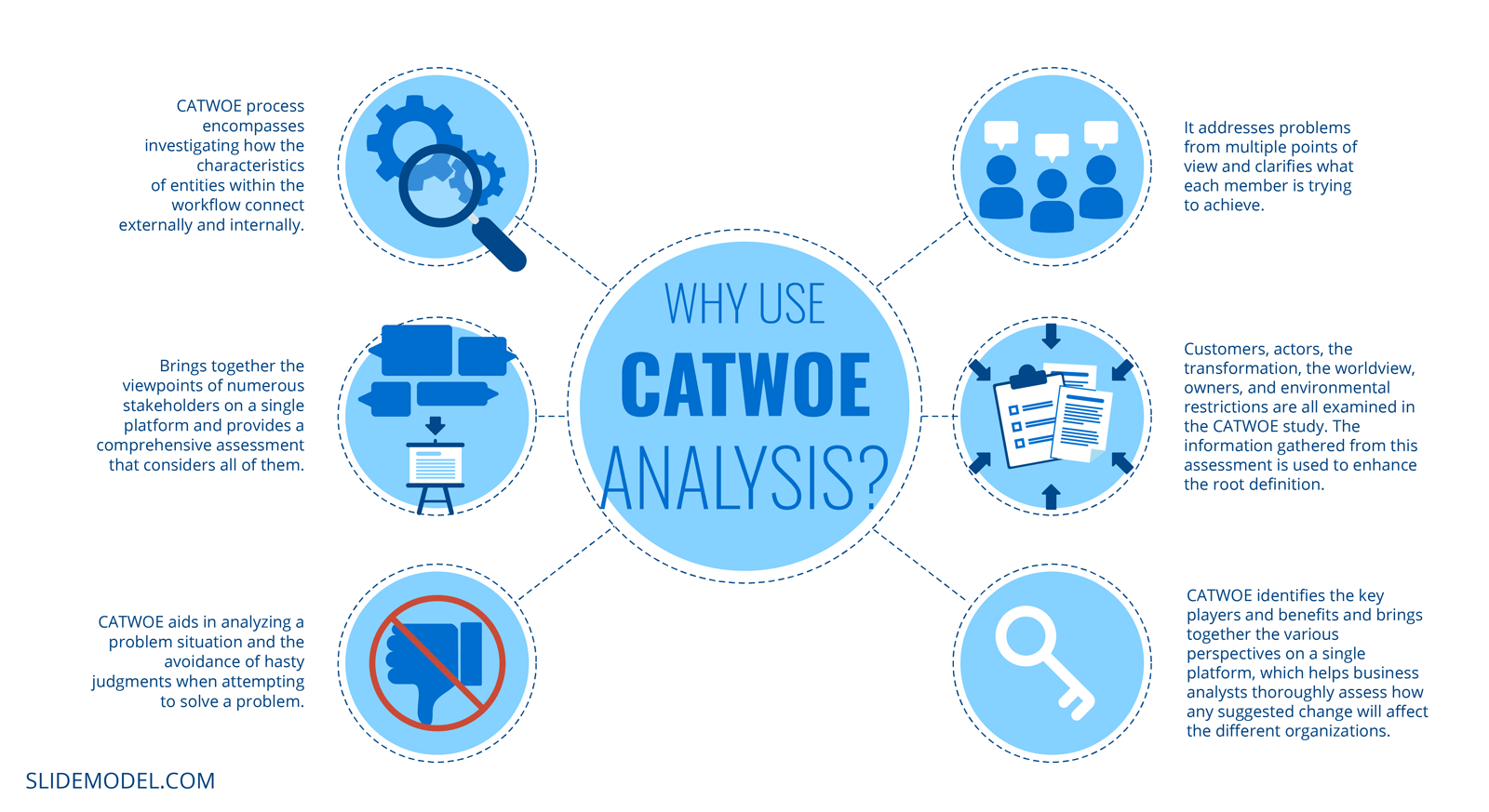
Make sure you have the required goals met by using this business analysis tool, CATWOE analysis:
- Using the CATWOE process thinking tools targets the existing system or activities inside a business. It encompasses investigating how the characteristics of entities within the workflow connect externally and internally.
- This method brings together the viewpoints of numerous stakeholders on a single platform and provides a comprehensive assessment that considers all of them.
- CATWOE aids in analyzing a problem situation and the avoidance of hasty judgments when attempting to solve a problem.
- It addresses problems from multiple points of view and clarifies what each member is trying to achieve.
- Customers (or victims or beneficiaries), actors, the transformation, the worldview, owners (possible transformation stoppers), and environmental restrictions are all examined in the CATWOE study. The information gathered from this assessment is used to enhance the root definition.
- CATWOE identifies the key players and benefits and brings together the various perspectives on a single platform, which helps business analysts thoroughly assess how any suggested change will affect the different organizations.
How does CATWOE help in Business Analysis and Decision Making?
Irrational decisions can cause businesses to lose money and customers. In today’s world, business analysts are an important part of an organization’s success and sustainability.
Business analysts use a variety of designed business analysis methodologies to assist firms in understanding the requirement, identifying problems, and sorting through a plethora of data and possibilities to discover the best actionable approach.
There are some of the most effective business analysis approaches and how they can be used to help a company succeed. Furthermore, there are numerous business analysis problem-solving approaches from which to choose. Nonetheless, the CATWOE analysis, explained here, is the most widely employed, and it’s safe to assume that its prevalence originates from its efficacy.
Applications & Examples of CATWOE Analysis
To understand possible applications of CATWOE analysis, we should discuss where you can use it and show some real-life CATWOE examples.
CATWOE Analysis can be applied at many points of the business transformation entire lifespan and for a variety of reasons throughout a process, including:
- Considering the outlook of a business system’s stakeholders
- Identifying the source of the issue or the actual conflict between parties
- Taking into account the various priority that stakeholders have allocated to multiple options, needs, or criteria
- Creating a business activity model to use as a basis for gap analysis
Here are a few real examples of CATWOE analysis as a convincing problem-solving approach.
Example of CATWOE Approach in an Aviation company
An aviation business, for example, investigates the potential of placing adverts on its flights. A CATWOE checklist might be created based on the analysis of the scenario.
In order to incorporate services that deliver these characteristics, the CATWOE examines the system and develops a comprehensive knowledge that combines the multiple views of the network components. An aviation business, for instance, investigates the potential of placing adverts on its flights. A CATWOE checklist can be predicated on the analysis of the situation:
- Customers (C) – Passengers, advertising firms, and marketing firms
- Actors (A) – Engineers, designers, personnel, the leadership team, and shareholders are all members of the cabin crew
- Transformation Process (T) – Advertising is displayed on the plane during the trip.
- World View (W) – Grow the earnings of the aviation company in order to increase revenue.
- Owner (O) -the person in charge of the system who can decide whether or not to execute the solutions
- Environmental Constraints (E) – Regulations at the airport, local legislation, and customs
Example of CATWOE Analysis in Coca-Cola Company
Let’s look at what Coca-Cola should consider before making significant strategic decisions using the CATWOE analysis.
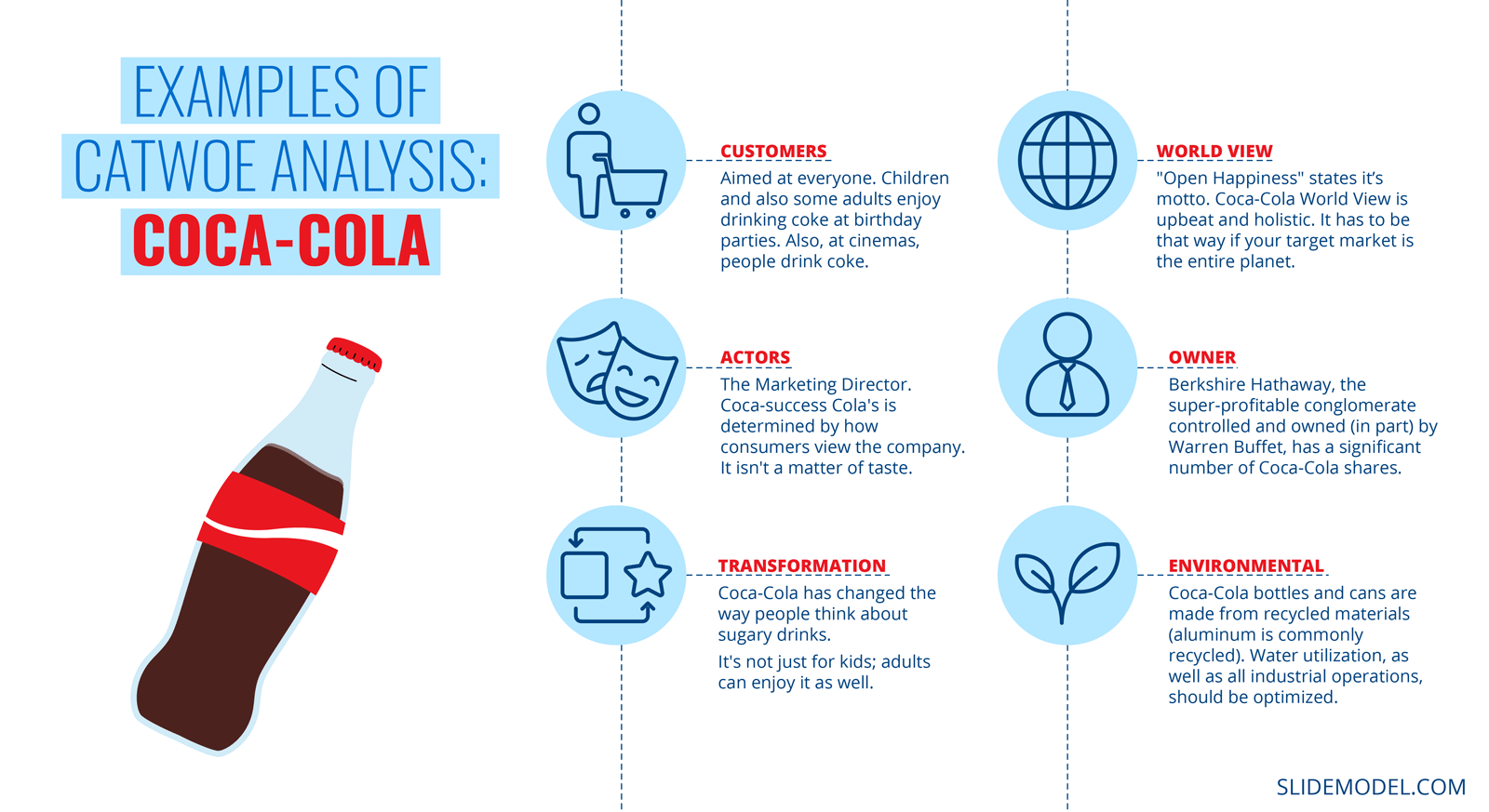
Customers: Coca-Cola is aimed at everyone. Children and also some adults enjoy drinking coke at birthday parties. Also, at cinemas, people drink coke.
Actors: Probably the most significant individual in the company is the Marketing Director. It isn’t a matter of taste. Coca-Cola’s success is determined by how consumers view the company.
Transformation: Coca-Cola comprises four ingredients: water, sugar, flavorings, and the best marketing strategy ever devised. Coca-Cola has also changed the way people think about sugary drinks. It’s not just for kids; adults can enjoy it as well.
World View: “Open Happiness” states Coca-Cola’s motto. Coca Cola’s World View is upbeat and holistic. It has to be that way if your target market is the entire planet.
Owner: Berkshire Hathaway, the super-profitable conglomerate controlled and owned (in part) by Warren Buffet, has a significant number of Coca-Cola shares.
Environmental: The world is heading toward a considerably more environmentally conscious economy. Coca-Cola bottles and cans are made from recycled materials (aluminum is commonly recycled). Water utilization, as well as all industrial operations, should be optimized.
Other methods for Root Cause Problem Solving
RAID
A RAID log is a tool used in managing projects to track anything that may influence the project at some time in the future. The abbreviation means:
- Risk: It is defined as the probability of an event occurring and the impact on the project if it does.
- Assumptions: any factors assumed to be in place for the project’s successful completion.
- Issues: Issues are things that go wrong on the project and need to be addressed.
- Dependency: any activity that relies on the project’s outcome or on which the project is reliant.
This strategy, typically employed in project settings, allows us to look at problems and solve them. As an alternative to RAID you can use RAIDAR, which adds two extra components (Action and Repairs). To save time preparing a RAIDAR presentation, you can use this RAIDAR PowerPoint template provided by SlideModel.
Combined CATWOE RAID Approach
CATWOE is a suitable method for determining a problem’s extra facets. Nonetheless, it does not go into detail about how to come up with solutions.
The two approaches can be integrated if problem-solving is viewed as a simple or complicated project with goals, purposes, a set period for resolution, and cost. As a result, connecting it with the CATWOE approach to bring another dimension to Root Cause Problem Solving makes sense.
Alternatively, business professionals can apply other problem solving techniques such as Drill Down Technique, Four Frame Model, 5 Whys, Cause and Effect Analysis.
Tools for Problem Solving
We’ve compiled a list of problem-solving tools to assist you and your team address organizational difficulties as quickly as possible. There are many different kinds of tools that can be employed. However, the most widely used management tools for quality control are discussed below. The trick is to become accustomed and comfortable with all of these high-quality tools so you can quickly select the right one when an issue arises. These types of problem-solving tools are problem-solving diagrams and problem-solving mind maps. They are as follows:
Problem-solving diagrams
Fishbone diagram
A fishbone diagram divides potential causes into divisions that branch off from the main issue. A fishbone diagram, also known as a cause-and-effect diagram or an Ishakawa diagram, can include several sub-causes branching out of each defined category.
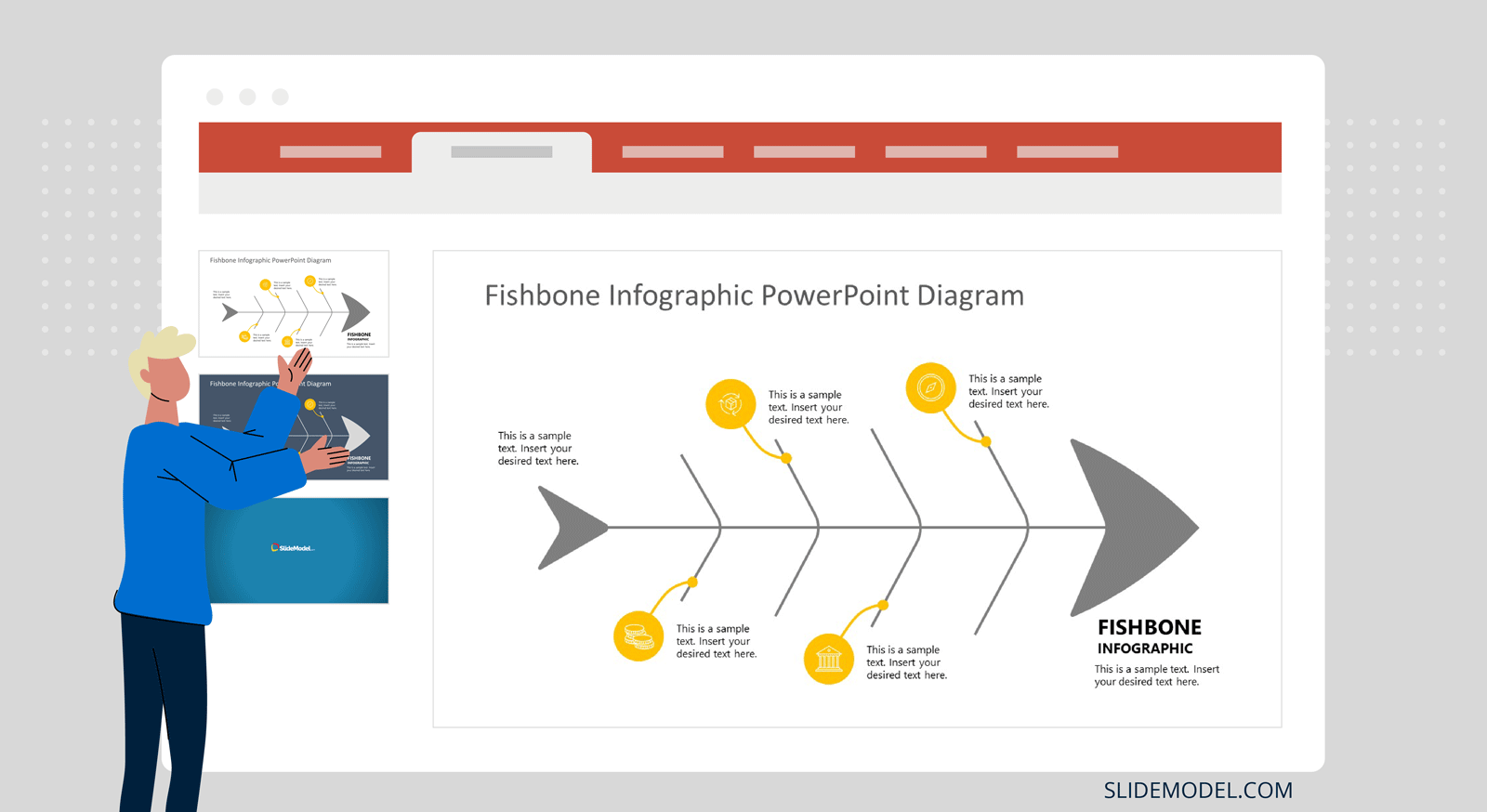
Flowcharts
A flowchart is a visual representation of workflow of a system or process and the decisions that occur through time. There are many flowchart tools to design flowcharts, but you can also create a flowchart in PowerPoint or Google Slides. Flowcharts come in a variety of shapes and sizes, with varying symbols and coding systems, but they always aim to depict the progression of events through time. Flowchart templates can help to speed up the design time.
Strategy maps
Organizations require a strategy management system, as well as a process for reviewing performance and adapting to a changing environment on a regular basis. A strategic map serves as a link between the planning and implementation process of a project.
Problem-solving mind map
1. Mind maps
Mindmaps can be used to organize thoughts on a central issue or to capture ideas generated during a brainstorming session. Mind map templates can help to save hours of manual work by reusing existing designs.
2. Idea maps
An Idea Map is a colorful, only one diagram that uses both hemispheres of the brain to visually capture ideas in a non-linear style. This strategy improves people’s ability to plan, organize, communicate, remember, invent, and learn more effectively.
3. Concept maps
Concept maps are ideal for structuring and organizing data because information is displayed hierarchically and relationships between concepts are traced and depicted using lines or arrows.
CATWOE Analysis model in a presentation
You can incorporate this well-researched CATWOE PPT template to explain how CATWOE analysis aids in identifying the core cause of problems and finding solutions to them at various phases of the strategic change throughout the entire life cycle.
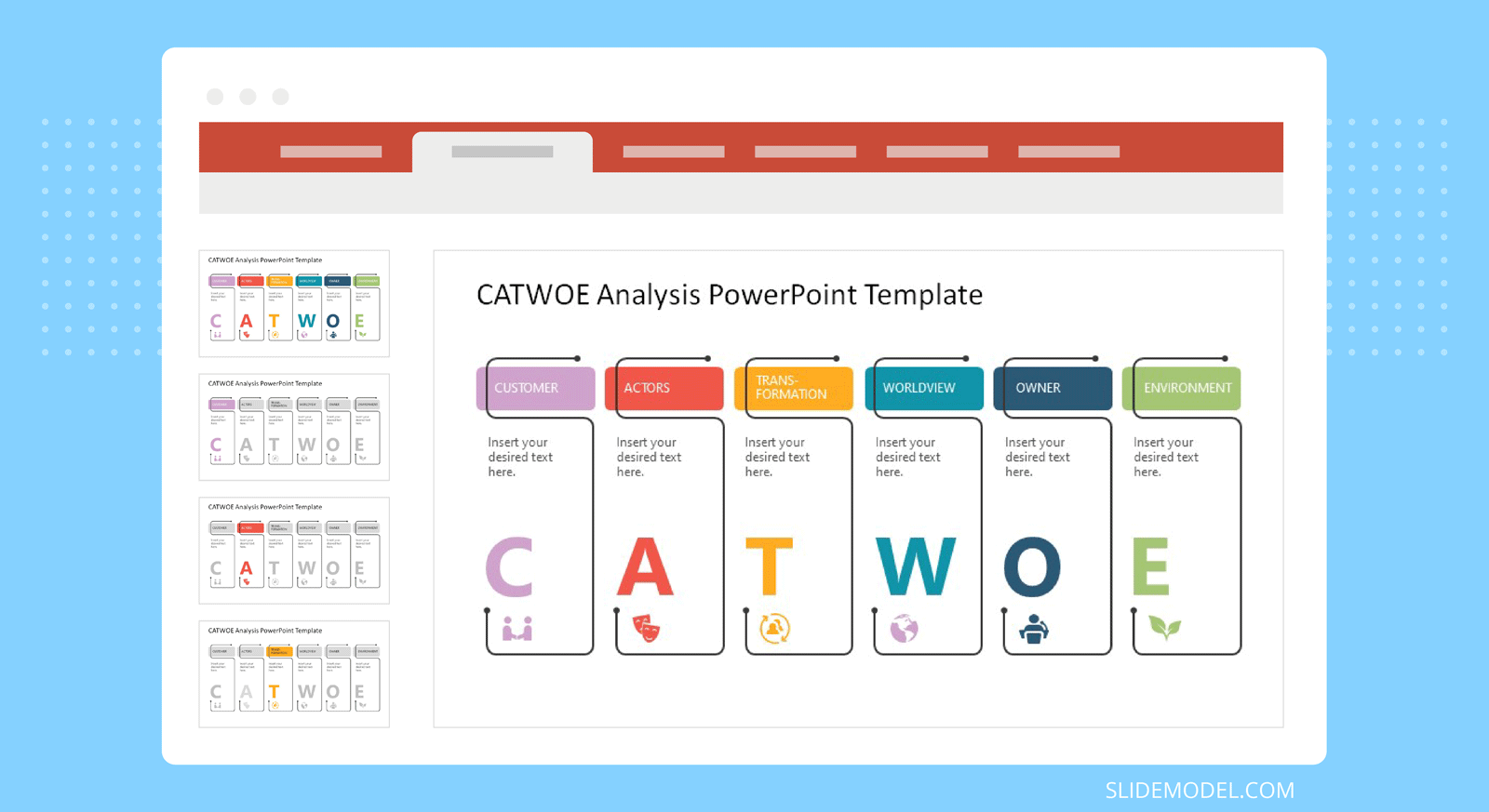
Final Thoughts
The CATWOE analysis advocates thorough explanation, participative management, and understanding of potential limits in order to successfully adopt solutions inside a business. It helps in understanding stakeholders’ viewpoint in a business, identifying the source of the issue or the actual conflict between them and taking into account the various priorities that stakeholders have allocated to various options, needs, or criteria to create an effective business activity model.
